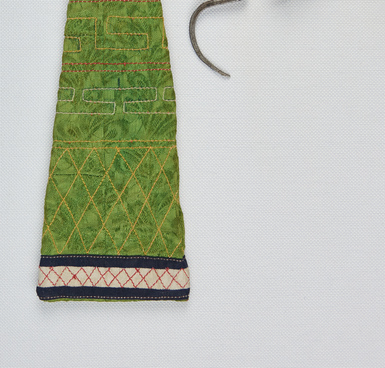In the Tuvan culture, there were different kinds of smoking pipes (danza) for men and women. Men’s pipes were short and thick, while women’s pipes were long and thin. Smoking implements served not only practical needs, but were also decorative accessories.
Smoking accessories (pipe, plaques for the pouch, cup with a pipe cleaner) were made by blacksmiths. Mouthpieces and heads of smoking pipes were made of metal. Tobacco pouches made of different materials (silk and chintz) were sewn by girls. Patterned paired metal plaques were sewn on the pouches, through which a chain was passed. Auxiliary objects were suspended on it: a sickle-shaped hook was used to clean the opening of the head of the smoking pipe.
A tobacco box (khorge) was used to keep snuff. Such snuffboxes were made of porcelain, precious and semi-precious stones, metal or bone. Tobacco boxes had a spoon cut out of meadowsweet or reed, with a bead on the end of the handle to make it easy to hold. According to Vsevolod Rodevich, “a sign of special courtesy of a soyot [a Tuvan] is to give you his snuffbox when you meet; if you do not sniff tobacco, you should at least hold it in your hands and praise it.” The khoorge snuffbox appeared in Tuvan culture as Buddhism spread in Tuva. It was kept in a patterned bag on the belt at the left side, and young people kept it next to their chests.
In his book “Tozhu-Tuvans”, the ethnographer Sevyan Israelevich Weinstein writes:




